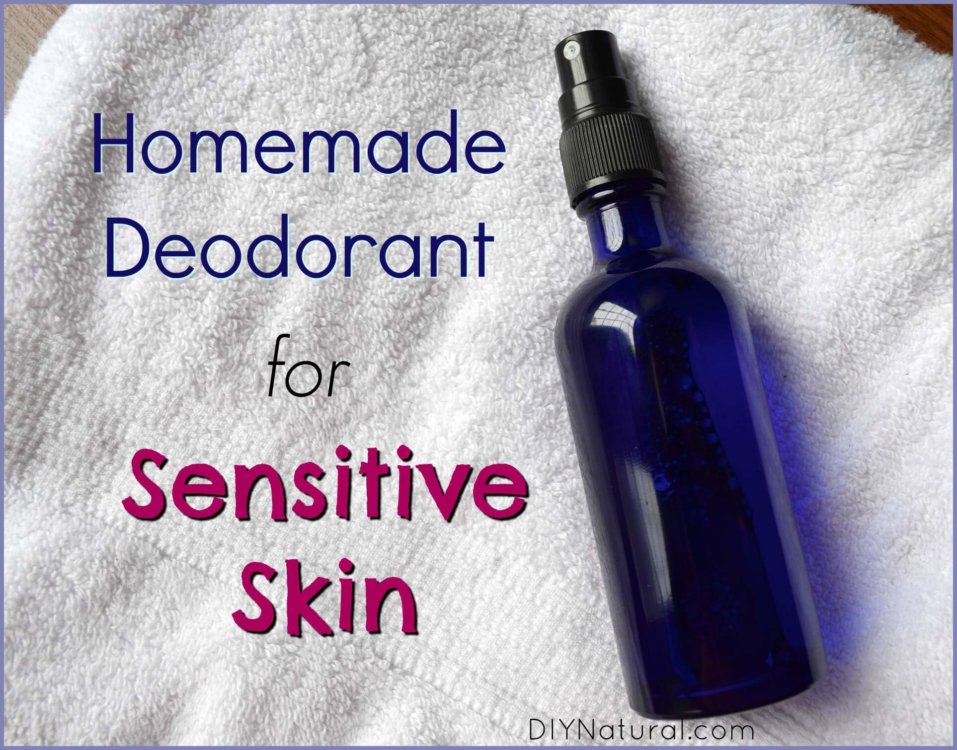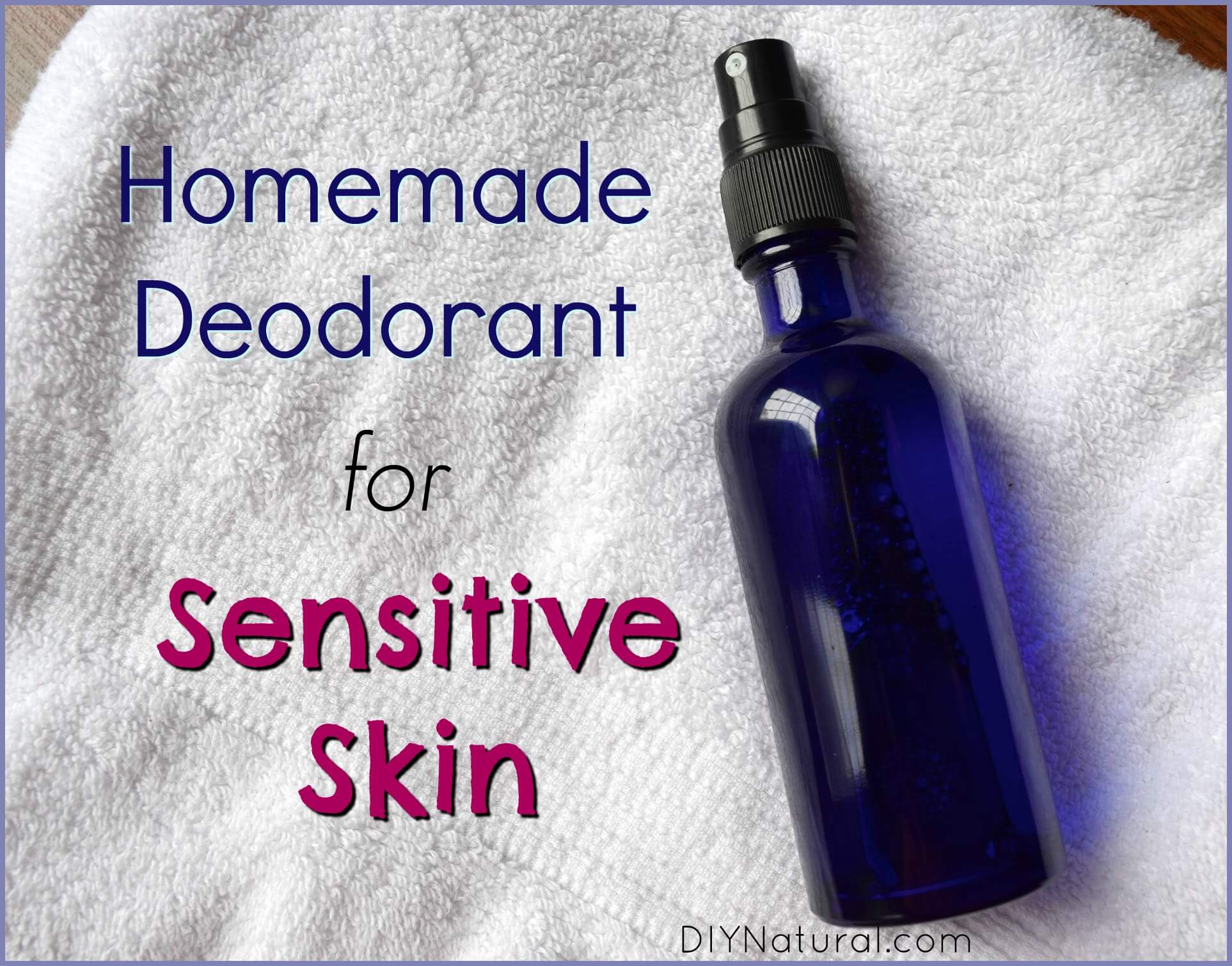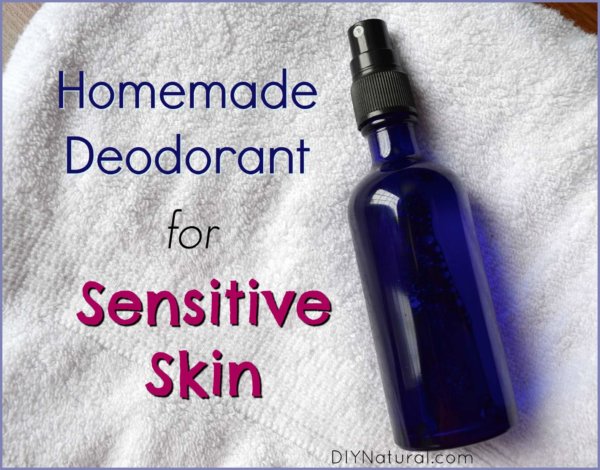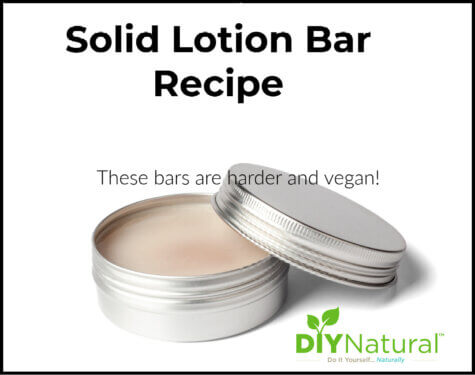
This homemade deodorant for sensitive skin works great and is REALLY simple to make. I use it every morning and it doesn’t bother my skin at all!
I have always been hesitant to try DIY deodorant.
Even though I write DIY recipes, I realize that I am not a chemist or a professional product formulator. My DIYs tend to be simple and affordable.
I never wanted to make a homemade deodorant because I was scared it would be too harsh. Many homemade deodorants contain irritating baking soda or other powders.
Other DIY deodorants require mixing oil and water which requires an emulsifier or a preservative. This makes things tricky. I don’t often create recipes that need emulsifiers or preservatives because I don’t normally keep those things on-hand. The only one I do tend to have is grain alcohol (190 proof), to blend essential oils into sprays.
Originally I wanted to add essential oils to this homemade deodorant recipe, but to properly do that I needed to mix them into grain alcohol to fully solubilize (dissolve) them. Grain alcohol is quite drying to skin and can be irritating so I decided it would be best to leave essential oils out of this one.
Also, since I use this deodorant daily (and sometimes twice a day), leaving the oils out will prevent any possible sensitization. Using the same essential oils daily can possibly cause an adverse reaction (sensitization) and I love my essential oils, so I leave them out of my daily personal care DIYs unless I am using them at a 1% or less dilution.
Ingredients to Fight Odor
Since this homemade deodorant for sensitive skin has very little scent, I needed ingredients that wouldn’t just mask body odor, but that would prevent it altogether.
My favorite natural astringent is witch hazel. You could choose to use alcohol-free witch hazel, but I chose to use witch hazel that contains 14% alcohol for this recipe. The alcohol helps kill bacteria that causes odors (more on that in this post: Simple and Effective Homemade Deodorant). I also am able to pick up this witch hazel in my local supermarket instead of ordering online which is helpful when I run out.
Witch hazel helps shrink pores. It does not prevent sweating, but can help you sweat less. Witch hazel is also great for irritated or itchy skin. I love how it makes my skin feel in the summer – cooled, toned, and refreshed!
Since the alcohol in witch hazel can be drying, I added aloe vera juice to this recipe. Natural aloe vera gel can also work, just be sure it is thin enough to pass through your sprayer.
Aloe vera is nourishing and hydrating to skin. It gives a lovely fresh and light aroma to this homemade deodorant for sensitive skin. I use this preserved aloe vera juice in this recipe. It has citric acid (pH stabilizer) and potassium sorbate (mold inhibitor), which is important because I don’t want to be using a moldy deodorant! The alcohol in the witch hazel also helps to preserve this DIY.
Aloe vera also helps destroy bacteria that can cause underarm odor. It’s a great solution for people who have sensitive underarm skin like me! Plus it’s affordable and can be used in so many other DIY projects.
I did not include anything to “mask” odor in this recipe (essential oils, fragrance oils, etc.) because I really don’t think it’s necessary. Also, essential oils will separate from this deodorant mixture and will not mix in completely.
If you do find that you are struggling with odor, give it some time. Quite often armpits need to detox from using commercial deodorants. Allow yourself a few weeks to adjust.
Homemade Deodorant for Sensitive Skin
I use this homemade deodorant for sensitive skin in the morning. If I am doing outside work or exercising I do reapply as needed. My husband even uses this DIY deodorant and finds that it works for him, even on hot summer days! He uses it as a body spray too because it's so inexpensive to make and it works so well.
Ingredients
- 1 - 4-ounce spray bottle with fingertip mister (find them here)
- 1 ounce witch hazel (find it here)
- 2 ounces aloe vera juice (find it here)
Instructions
- Combine witch hazel and aloe vera juice in a 3-ounce spray bottle.
- Cap and shake well to combine.
- Store in a cool, dry, dark place.
- Use as needed.
What do you think of this homemade deodorant for sensitive skin? Let us know.
*******





I buy hydrogen peroxide at the drug store, open the lid, add Peppermint essential oil, and shake. Then daily I just pour a half teaspoon or so in my hand and splash under my arm. Give it a moment to dry while you brush your teeth. Peppermint EO gives a fresh scent and helps kill smelly bacteria. Not sure how many drops of EO I use.
I’m going to add witch hazel to my spray, which mostly contains vodka and grain alcohol and lemon/honey hydrosol for a bit of scent! We don’t want to smell of alcohol if we get stopped by the police, do we?
I make a coconut oil based deodorant that includes baking soda, among other ingredients, but no alcohol or aloe. I swear by it, and so do friends.
I do add essential oils to the deodorant because the ones I use are antimicrobial, and add to the overall efficacy.
Hi,
I read all the comments on the deodorants. I am highly gluten intolerant. Therefore using a grain based alcohol, simply isn’t an option for me. Witch hazel causes tenderness. Could you recommend another alcohol?
Nash, you could look for other alcohols that are not grain-based. For instance, a lot of herbalists use brandy for their herbal products, and I think you can find a variety made from various plants. You could also look for a recipe that doesn’t use any alcohol.
If you do use another kind of alcohol, you can infuse it with a useful herb, like sage or yarrow, that will offer astringency, which is one of the main things witch hazel does.
does it stain your white or light colored clothing?